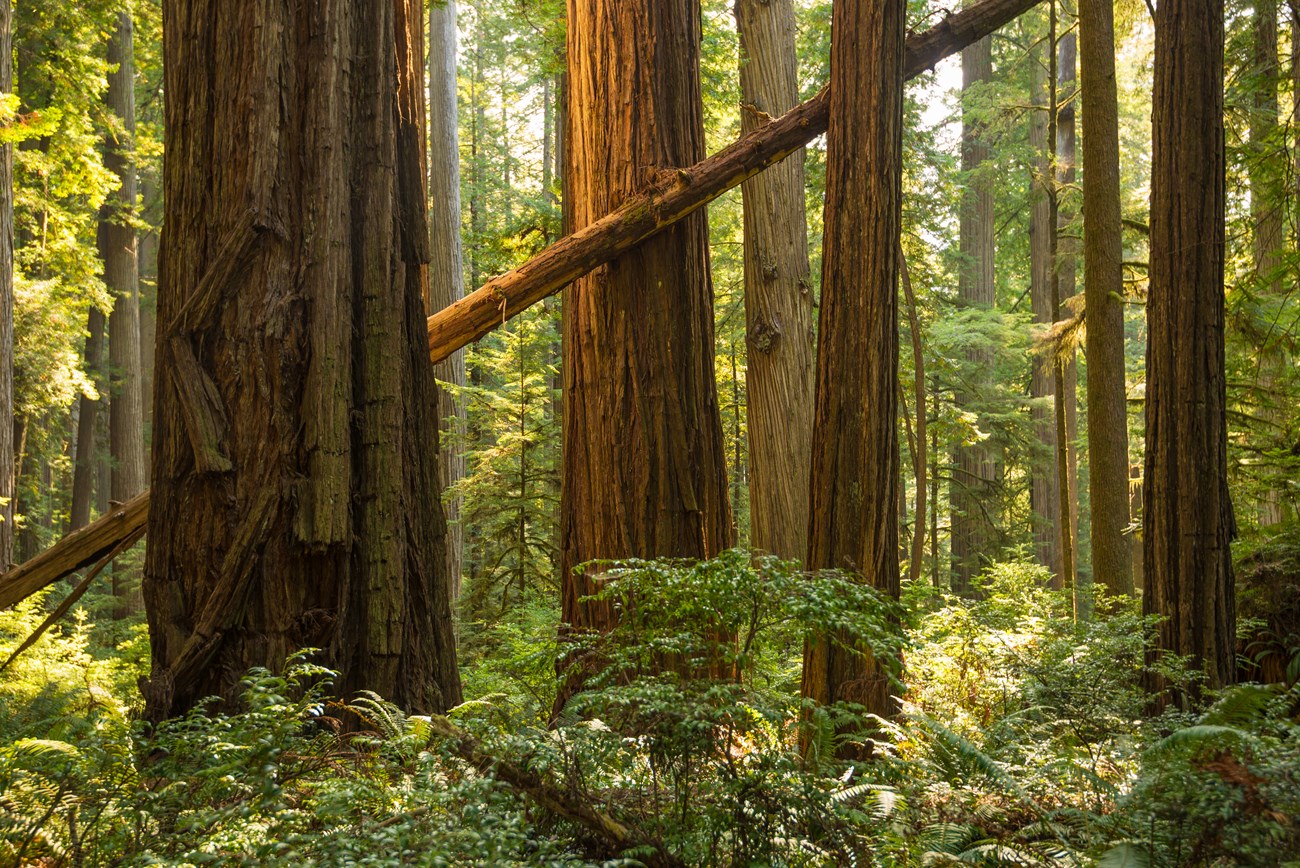Last updated: July 16, 2020
Article
Coast Redwoods v. Climate Change

Jessica Weinberg McClosky
June 2020 - Climate change caused by human greenhouse gas emissions has already begun to take a toll on trees in California. In fact, it is tied to a doubling of tree mortality in the Western US from 1955 to 2007 via increasing droughts, wildfires, and insect infestations. But what might climate change mean for California's iconic coast redwood trees? A 2015 study found that moderate climate change could put coast redwoods in the southern parts of the tree's range at risk as soon as 2030. That includes the redwoods in San Francisco Bay Area parks. Now, a new study has added another layer of complexity to that picture.
The earlier study modeled climatic suitability for coast redwoods at an 800 meter resolution. But quite a lot of topographic diversity can exist within 800 square meters. So the authors of the new study wondered: how do finer scale, topographically-linked factors like soil moisture and fog influence redwood habitat suitability today? And what insights could understanding more local habitat suitability factors yield with regard to redwood habitat under climate change?
The authors analyzed redwood habitat at three distinct locations. Among them was Mt Tamalpais in Marin County, including Muir Woods National Monument. Advanced remote sensing technology and modeling made it possible for them to assess large areas at a 10 meter resolution. They found that across all three locations, redwood density was consistently related to vertical height above streams. Density decreased as height above a stream increased. At two locations including Mt Tam, fog frequency was the most important predictor of redwood density.
Their findings confirm that redwood habitat suitability varies a lot within 800 square meters. As a result, the authors suggest that descriptions of climate/habitat suitability at such low resolutions are incomplete. Alone, they risk masking the presence of microrefugia. Microrefugia are the smaller places where a species may be able to persist in spite of climate change due to other habitat strengths. For example, could stream corridors serve as microrefugia for coast redwoods? The authors think, given their results, it is a possibility worthy of more research.
For more information
- Francis, Emily J., Asner, Gregory P., Mach, Katharine J., Field, Christopher B. (2020). Landscape scale variation in the hydrologic niche of California coast redwood. Ecography. 10.1111/ecog.05080.
- Fernández, Miguel, Hamilton, Healy H., Kueppers, Lara M. (2015). Back to the future: Using historical climate variation to project near-term shifts in habitat suitable for coast redwood. Global change biology. 21. 10.1111/gcb.13027.
